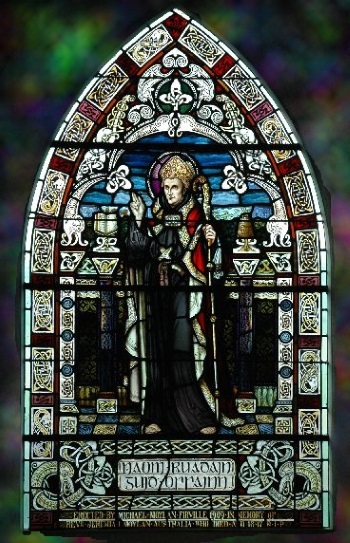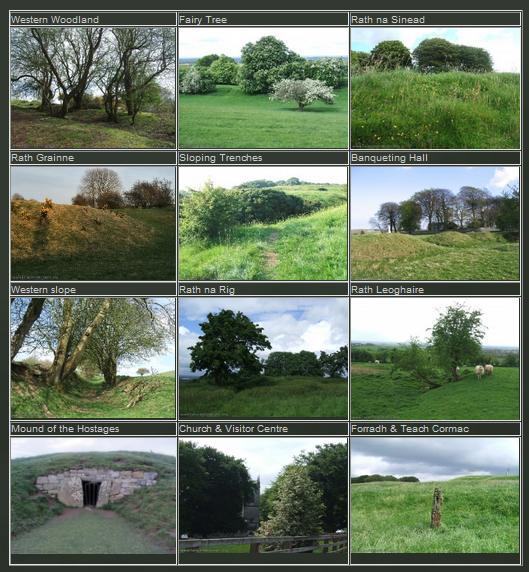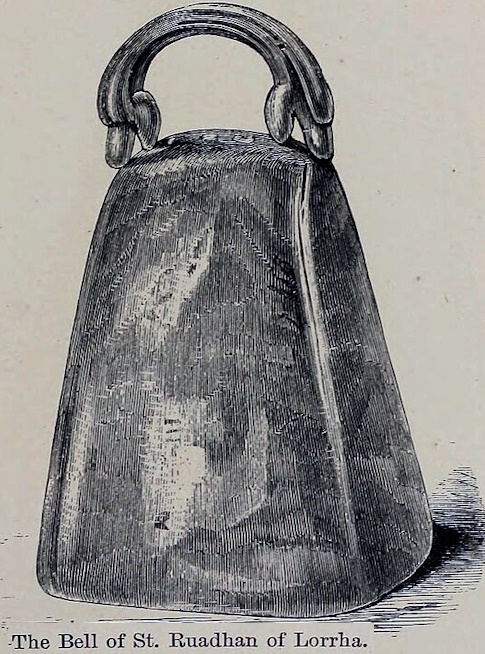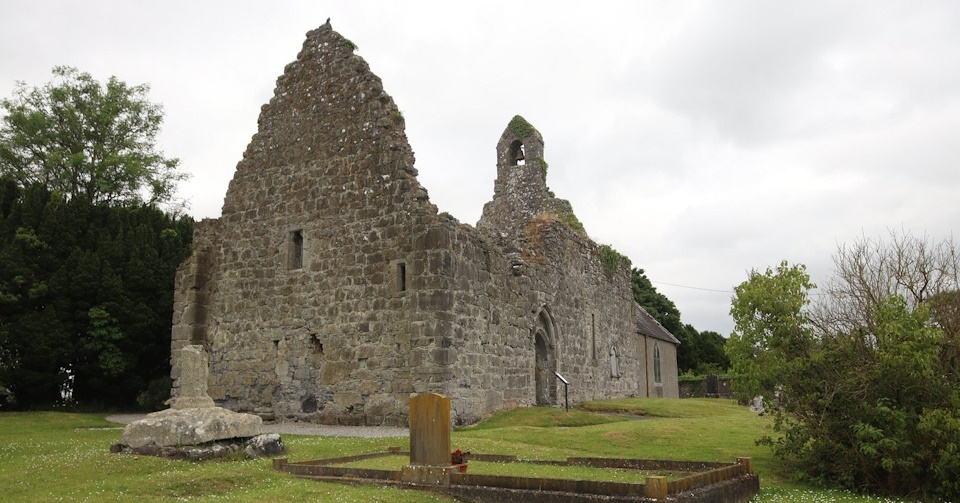15th April - St Ruadhán's Day
Written by Anne Newman Monday, 15th April 2019 updated 2024

April 15 is the feast of Saint Ruadhán of Lothra, one of the Twelve Apostles of Ireland.
Ruadhán, whose name means ‘red-haired man’, is said to have been the son of Fergus Bearn, son of Dera Dubh, of the race of the kings of Munster. He was educated and ordained in Clonard, Co. Westmeath, by St. Finian and was known as one of the Twelve Apostles of Ireland.
After this, according to the Bethada Náem nÉrenn, he went to Muscraighe settling in Ara mac ua Neitt. Ruadhán then moved and founded the monastery of Lorrha (or Lothra) in north Tipperary, fourteen kilometres west of Birr, Co Offaly. He is said to have replaced St. Brendan (the navigator) who moved to Clonfert.
Lorrha is a good example of an early monastic site that was taken over by the Normans in the 12th century and subsequently developed into an Anglo-Irish borough. There are a number of ruins in the village of the Celtic foundation and of later Augustinian and Dominican foundations. Today both the Catholic and Church of Ireland churches in Lorrha, in the diocese of Killaloe, are dedicated to St Ruadhán.
There are stories of disputes between Ruadhán and Brendan of Clonfert, who set up a monastery near to Ruadhan’s, but when the monks of Lorrha protested, Brendan and his monks decided to move on.
 | There is a tale that Ruadhán cursed the kings of Tara for not respecting the right of sanctuary and their high places were abandoned and their influence ended. |
The Cursing of Tara
Cursing others was a popular ancient tradition, from the Egyptians and their Mummy Curses, the Romans writing them on tablets, to medieval storytellers. There is a tale that Ruadhán cursed the kings of Tara for not respecting the right of sanctuary and their high places were abandoned and their influence ended.
It was said to be the last battle between the Druids and the Saints of Ireland. For a year and a day they fasted, calling upon miracles, workings and wonders to convince the king, and for a year and a day the Druids within hurled back curses, imprecations and foul black magic. Psalms were chanted, bells were rung hard whether or not the sun was in the sky, storms wracked the seat of kings and strange creatures were seen abroad. Young men and women in Tara died suddenly and it seemed the Druids were getting the worst of it.
After that time had passed the king had a dream, where he saw a great
tree on top of Tara hill hewn down by people from a strange land, and
he knew it to be himself. Awakening, he went to the assembled saints and
handed over Aedh, his Druids scattered to the four winds, but not
before they and the king cast one final curse. Emerald Isle.ie - the cursing of Tara

Legends of Ruadhan
Ruadhán gave his own two chariot-horses as alms to lepers, two stags coming from a wood to draw his chariot in their place.
A hind used to come each evening to Lorrha to be milked by Ruadhán, and then run to Lynnaly for a morning milking by Colmán.
Another story makes him a friend of the saoi liag or master physician Aed Mac Bricc of Killare, Co Westmeath. It may also be that Maelruain (servant of Ruadháin) had some connection with Lorrha, or that he was simply called after him.
Several of the other miracles attributed to him involve healing the sick and raising from the dead people who were recently deceased.
Ruadhan’s hand, enshrined in silver, was preserved at Lorrha until it was lost around the time of the Reformation.
His bell is in the British Museum.
He died in 584 AD.
More tales of Ruadhancan be found here: celt.ucc.ie
Aengus praises Ruadhánin on his feast of 15th April:
| Prímdae bréo nádathbi ar-fich tola tothlai, ba caín lie lógmar Ródánlócharn Lothrai. | An excellent flame that does not wane, that vanquishes urgent desires. Fair was the gem, Ruadhán, lamp of Lorrha. |






